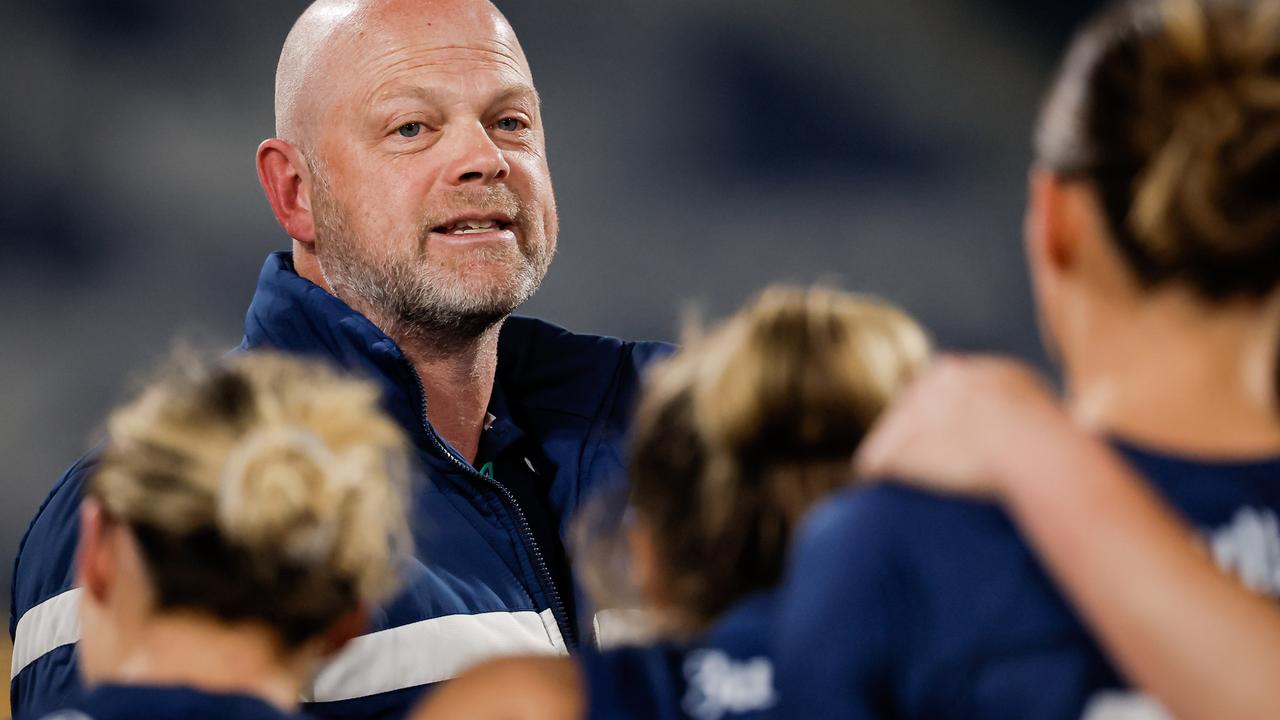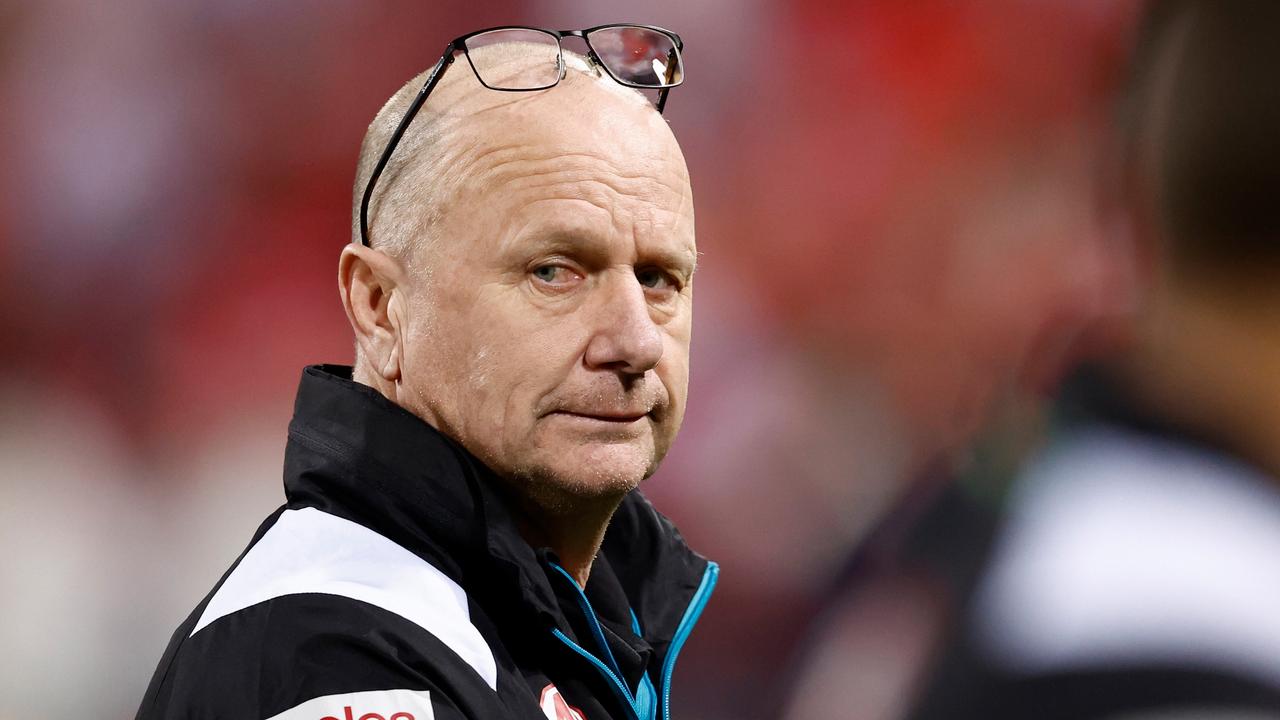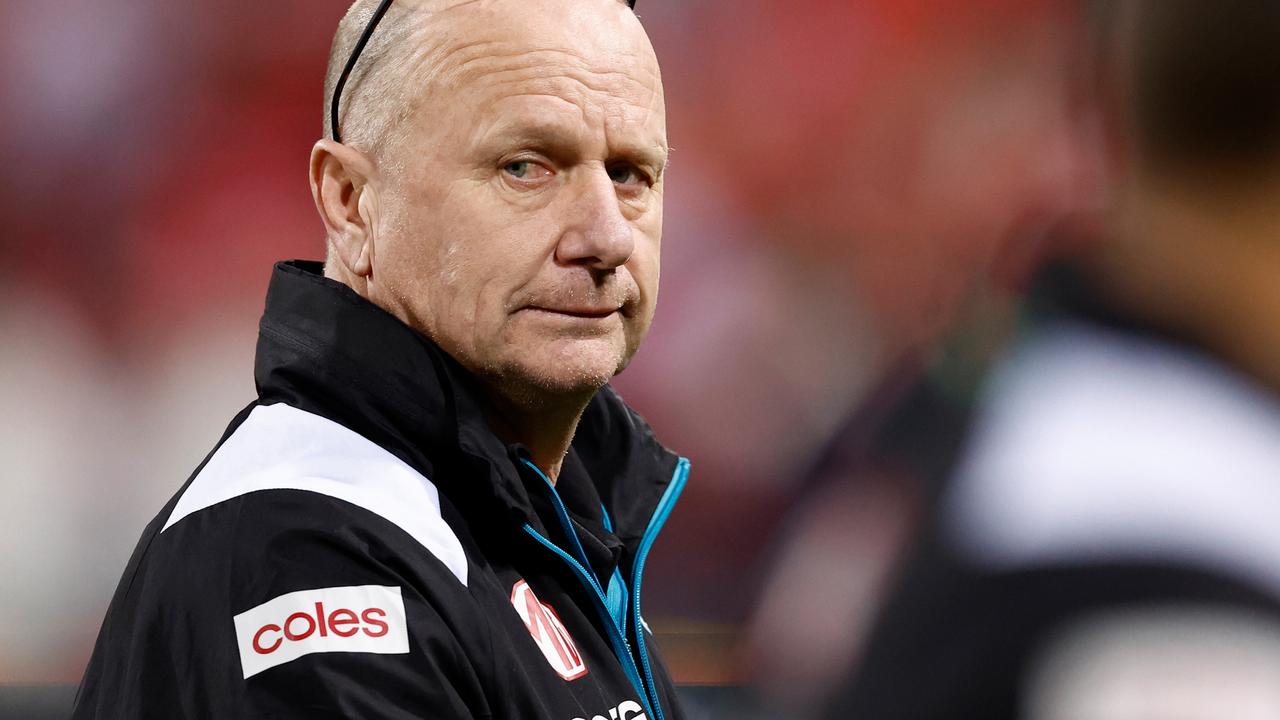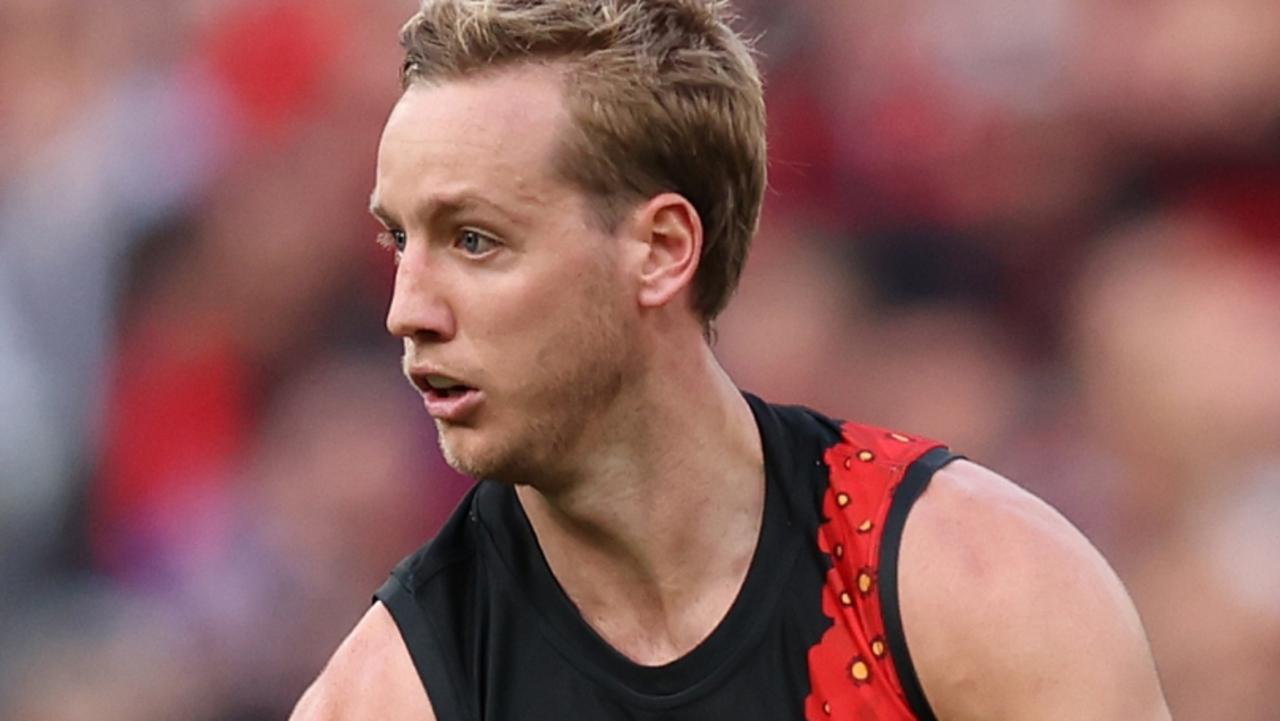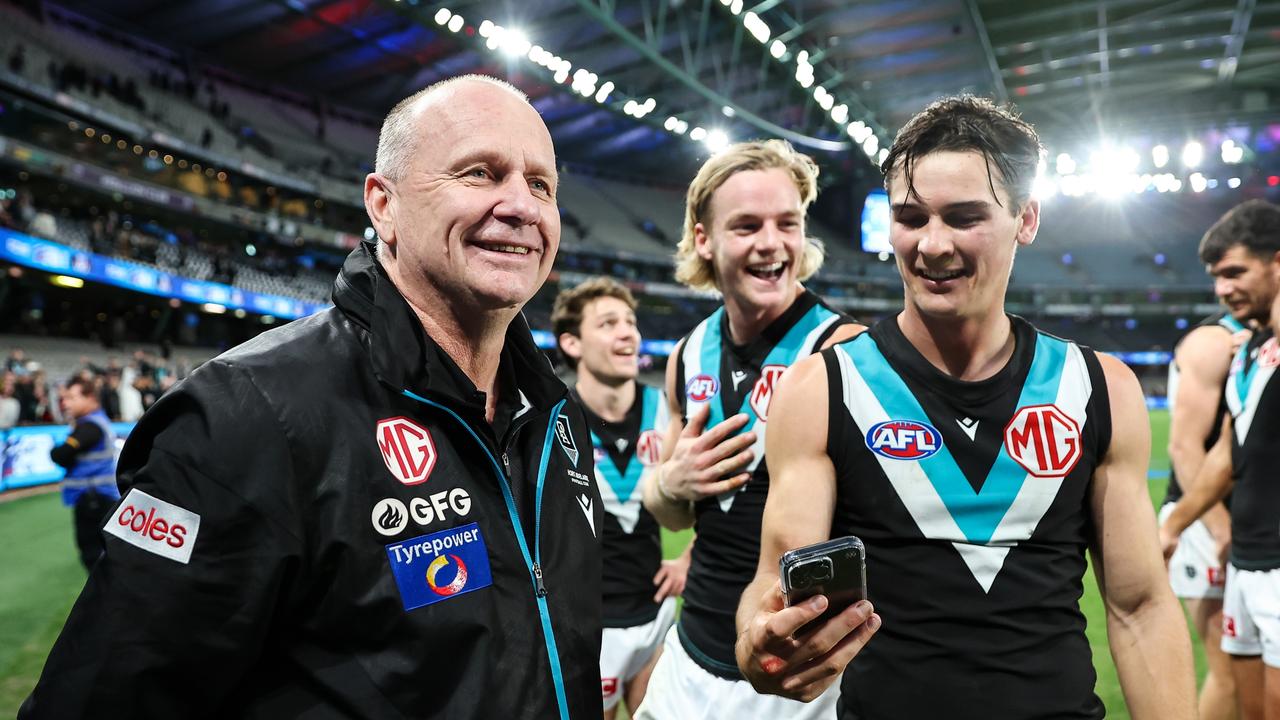It’s in the Genes: Extracts from new book documenting Australian football families
A century ago, Geelong was known as the ‘Pivotonians’. And a player pushed hard for a name change. It is among the stories in a new book sharing the history of Australian football families.

AFL
Don't miss out on the headlines from AFL. Followed categories will be added to My News.
A new book ‘It’s in the Genes’ extensively covers the history of Australian football families.
They include the Cordners, Coventrys, Buntons, Whittens, Dyers, Kennedys, Riolis, Barrassis and many more.
The Geelong Cats families sit in the upper echelons of football family dynasties with the Abletts, Rankins and McShanes standing out.
READ below for some fascinating Cats extracts from Des Tobin’s book.
CAT BEHIND GEELONG’S PIVOT
It’s in the Genes extract: 10 members of the Rankin and O’Donnell clan have played over 900 games (and counting) and kicked nearly 600 goals with four VFA/ VFL/AFL/AFLW clubs.
A number of family members have captained and/or coached their clubs. Teddy, Bert and Cliff Rankin are members of Geelong’s Hall of Fame, and Gary O’Donnell of Essendon’s.
Many have represented their state, won club best and fairest awards, and been premiership players.
The Rankins are one of only two known families to have produced five generations of VFL/AFL/AFLW players, and one of only three families known to have had members play Australian football at senior level (in Victoria) in three different centuries’.
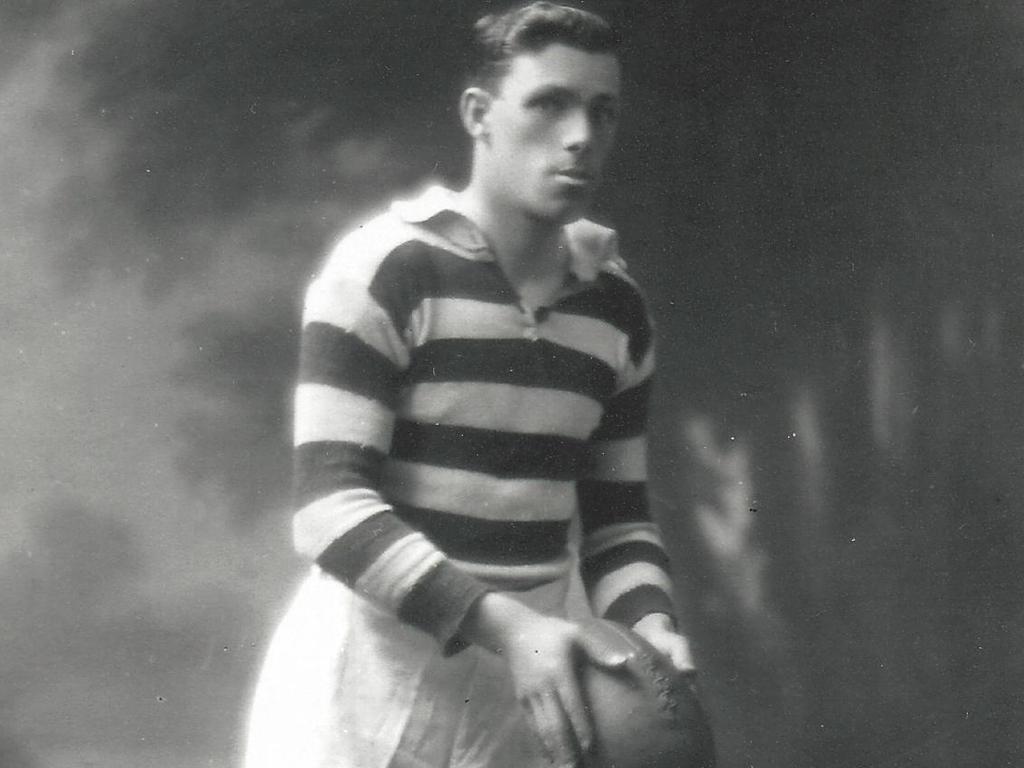
On top of that outstanding record, one of their number former 1920s captain Bert Rankin, is generally accepted as the man responsible for Geelong being known as the ‘Cats’;.
It’s in the Genes extract: In 1923 Geelong had lost five of its first eight games of the season and desperately needed to defeat a powerful Carlton side in Round 9 to keep its fading finals hopes alive.
Previewing Geelong’s ‘must win’ match, Herald cartoonist Sam Wells included a black cat in his weekly cartoon, cheekily suggesting Geelong would need ‘the luck of a black cat’ to defeat Carlton.
The Pivotonians [as the club was then widely known] responded with one of their best performances for the year, defeating Carlton by five points on the Blues’ home turf at Princes Park. Bert Rankin led the charge from the ‘pivot’ (centre), while Cliff was a major contributor, with five goals at full-forward.
Delighted with his team’s performance, Bert Rankin latched on to Wells’ ‘black cat’ analogy, and pressed GFC’s committee to formally adopt the ‘Cats’ tag as the club nickname.
The committee agreed. The club went on to make the 1923 finals and continued to use the ‘Cats’ nickname (first as ‘Black Cats’ and later as simply ‘Cats’).
Today – a century on – the club is officially known as the ‘Geelong Cats’.
THE ABLETT NAME
The name Ablett has been associated with Australian football since Fred Ablett — a cousin of Gary Ablett Senior’s great-grandfather, George Ablett — played 56 games with North Fremantle and Midland Junction in the West Australian Football League (1906–10).
Another relative (Gary Senior’s great-uncle), Alf ‘Lofty’ Williamson, played 19 games with Carlton and Melbourne prior to WWI and Len Ablett, a first Cousin of Gary Senior’s father Alf, played 70 games and was a member of the Jack Dyer captained/coached 1943 premiership team.
Gary Ablett senior was one of Alf and Colleen (Walker) Ablett’s eight children – five boys and three girls. It is said the kids were the beneficiaries of a mix of their parent’s genes.
It’s in the Genes extract: From Alf they got their strength and hardness. From Colleen – a brilliant schoolgirl sprinter whose records stood for years – their speed and agility. The boys – Lenny, Graham, Geoff, Kevin and Gary – were mad on all sport. Football in particular.
And all three girls, Faye, Julie and Janice, made their mark on the athletic track and netball court. Lenny and Graham became fine local footballers with Drouin in the West Gippsland Football League (WGFL). Geoff and Kevin reached senior VFL ranks.
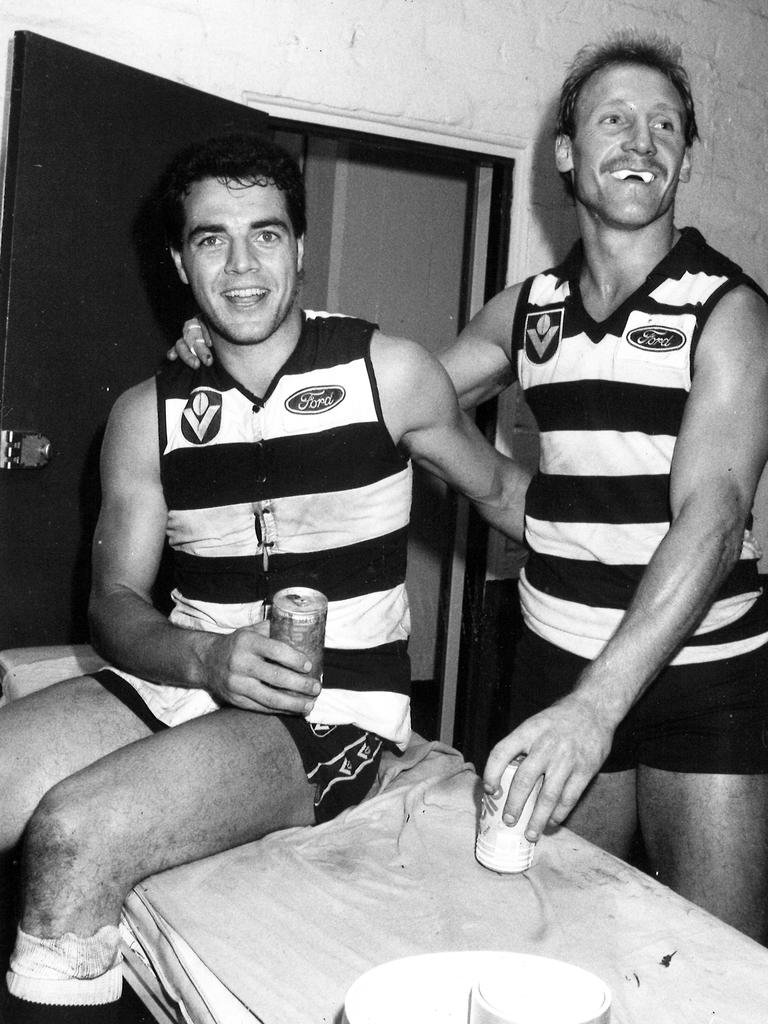
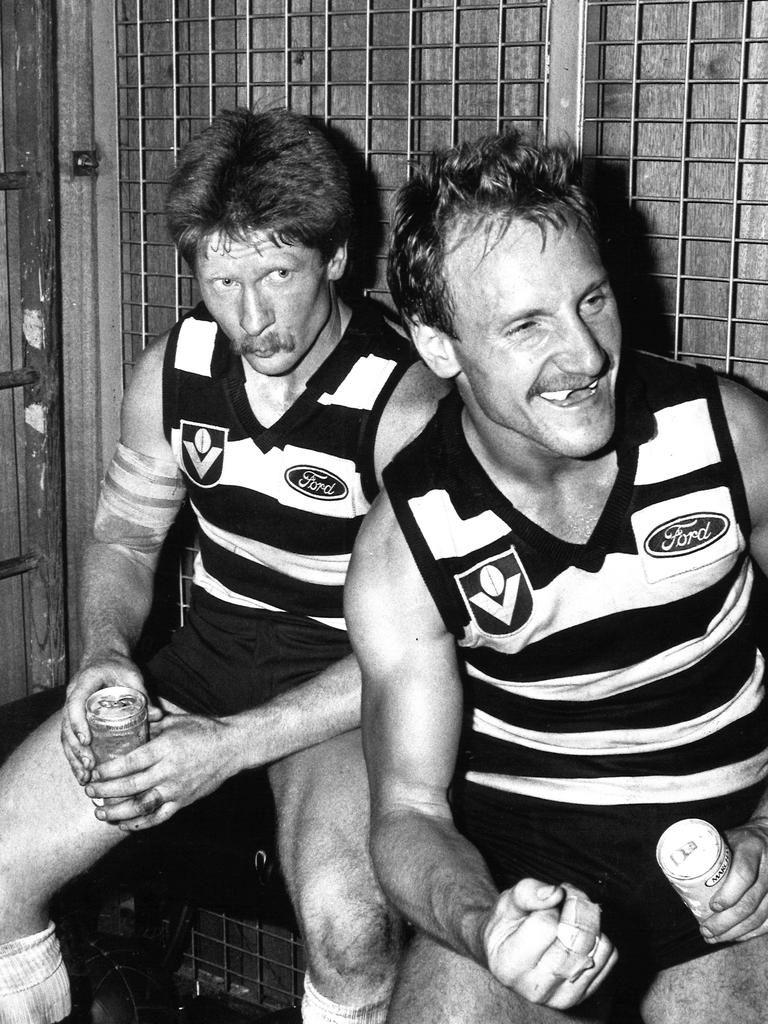
But the youngest of the boys, Gary, was destined to achieve football immortality and undergo a nickname change from ‘Noddy’ (due to his penchant for nodding his head as he gave monosyllabic responses to questions), to ‘God’.
And Gary would father a son – also named Gary – who possessed comparable ability, and in many ways, attained even higher standing in the game’. And Gary seniors second son Nathan would also play at senior level and was a Geelong premiership player in 2007.
Over the years there has been much speculation about who was the greater player – Gary senior or junior? The question remains vexed but there is little doubt that the pair were the greatest of all time father/son combination the game has seen.
It’s in the Genes extract: Apart from their sublime skills, sense of occasion and an uncanny ability to remain calm when the pressure was on and deliver a game-changing performance, their places in football immortality have forever been sealed in particular by two unforgettable performances.
For Gary Junior, it is two virtually identical goals kicked at Kardinia Park four years apart. For Gary Senior, it is the 1989 grand final, in which he kicked nine goals in a losing team, and collected the Norm Smith medal.
The 1989 grand final is regarded as one the VFL’s greatest. It demonstrated all that is good (and some that is not so good) about Australian football. It started with the felling of Hawthorn champion Dermott Brereton, whose arrogant strut and prodigious ability infuriated opposing supporters but delighted those in Hawks colours. It ended in tears for all from ‘Sleepy Hollow’ who, regardless of Gary Ablett’s stunning performance, were still six points short when the final siren sounded like a death knell.
Gary Ablett’s nine goals, two of which came from individual efforts that demonstrated his phenomenal athleticism, incomparable ball handling skills and unerringly accurate kicking. At the 12-minute mark of the second quarter, Gary arrived late at a boundary throw-in between the half-forward line and forward pocket. With the ease of a stockman swatting a fly, he brushed the pack aside as he plucked the ball from the air. Landing like a cat and without breaking step, he slammed home his third goal.
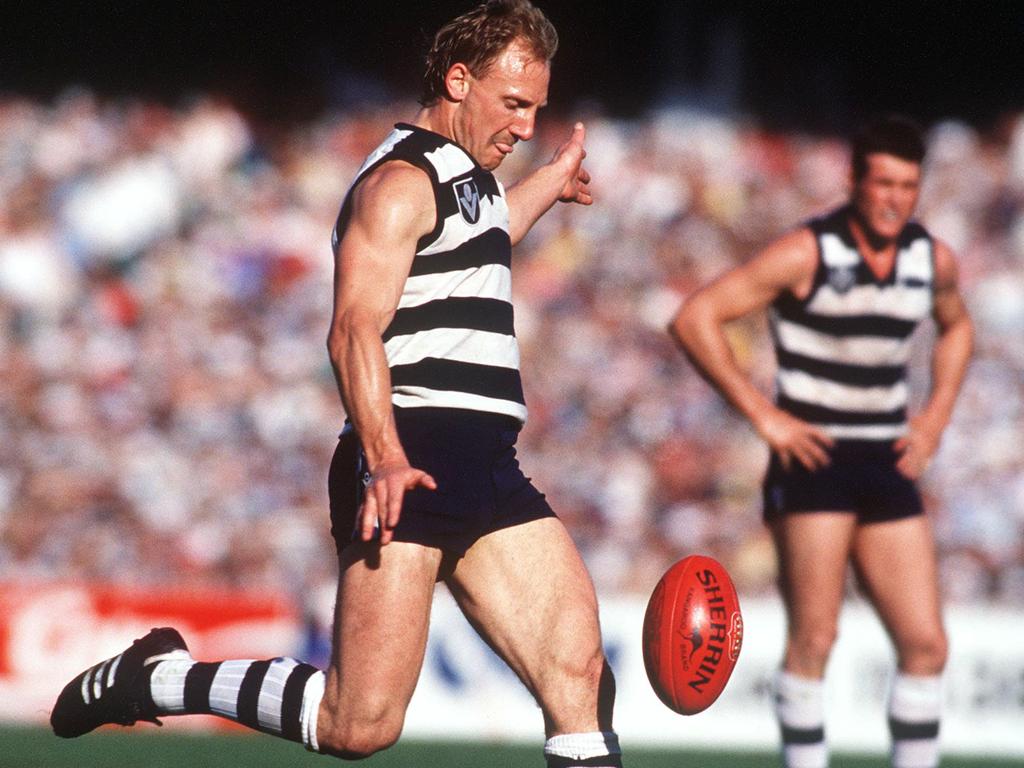
Then, at the 19-minute mark of the final quarter, with the Cats trailing by 23 points, Ablett made a move of which the Argentine soccer wizard Diego Maradona would have been proud.
Some 45 metres from goal, his right arm held by his tagging opponent, Ablett chested a long incoming kick to the ground, gathered it as he turned to his right (thus blindsiding his bewildered opponent) and in one fluid movement, split the goals with a raking left-foot drop punt that chalked up his eighth major for the match.
Gary Junior’s two ‘identical’ goals at Kardinia Park are forever etched in the memory banks of those privileged to have witnessed either or both.
In 2009, with 150 Geelong games under his belt and at the peak of his powers, the ‘little master’ as he was by then known, stepped up for a Round 5 clash with the Brisbane Lions.
Accepting a hand pass from a teammate deep in the forward pocket (in front of the now demolished members’ stand and past-players’ enclave), he unleashed his lethal right foot hooked across his body.
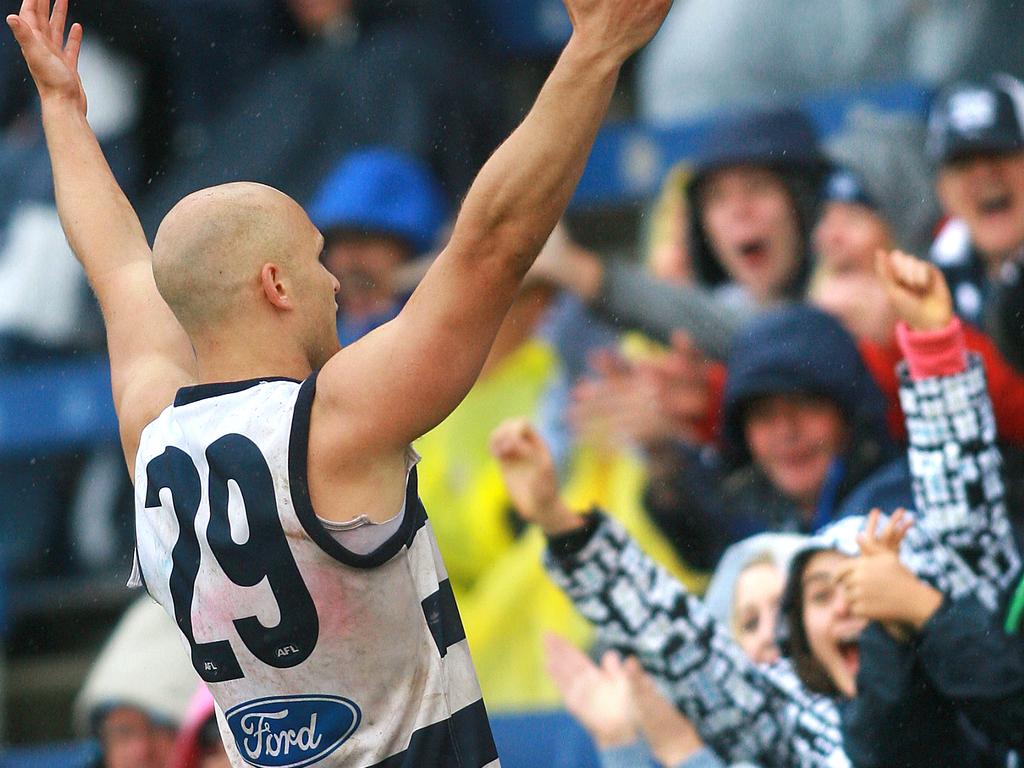
The goal umpire barely moved. He simply raised two fingers as he reached for his flags, and the crowd rose to its feet. Four years and 91 games later, with Geelong hosting the Gold Coast Suns, Gary found himself in almost exactly the same spot as before.
Now in the red and gold colours of the Suns instead of Geelong hoops, Ablett gathered a loose ball, and in a carbon copy of his 2009 effort he replicated the kick. The entire Geelong-faithful-filled grandstand rose as one.
Des Tobin’s hardcover, 487 page, lavishly illustrated book ‘It’s in the Genes – Australian Football Families’ is priced at $55.95. It is available in bookshops – including Young and Cook (Westfield Malop St), Dymocks Waurn Ponds – and online at destobin.com.au
More Coverage
Originally published as It’s in the Genes: Extracts from new book documenting Australian football families

